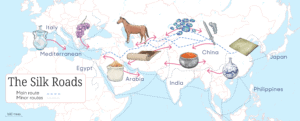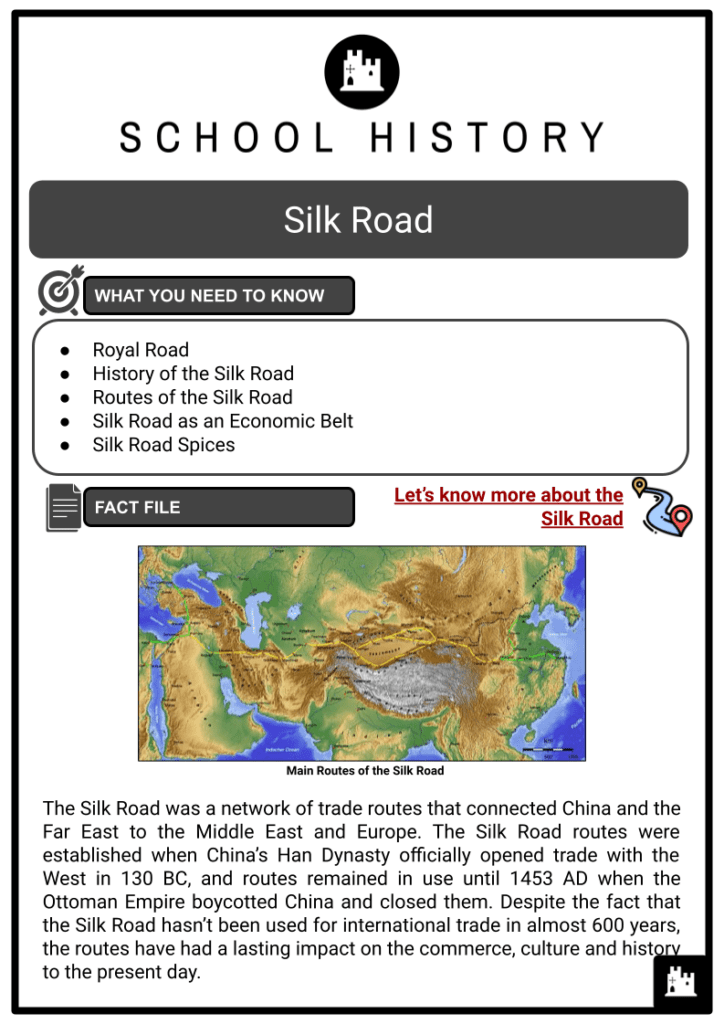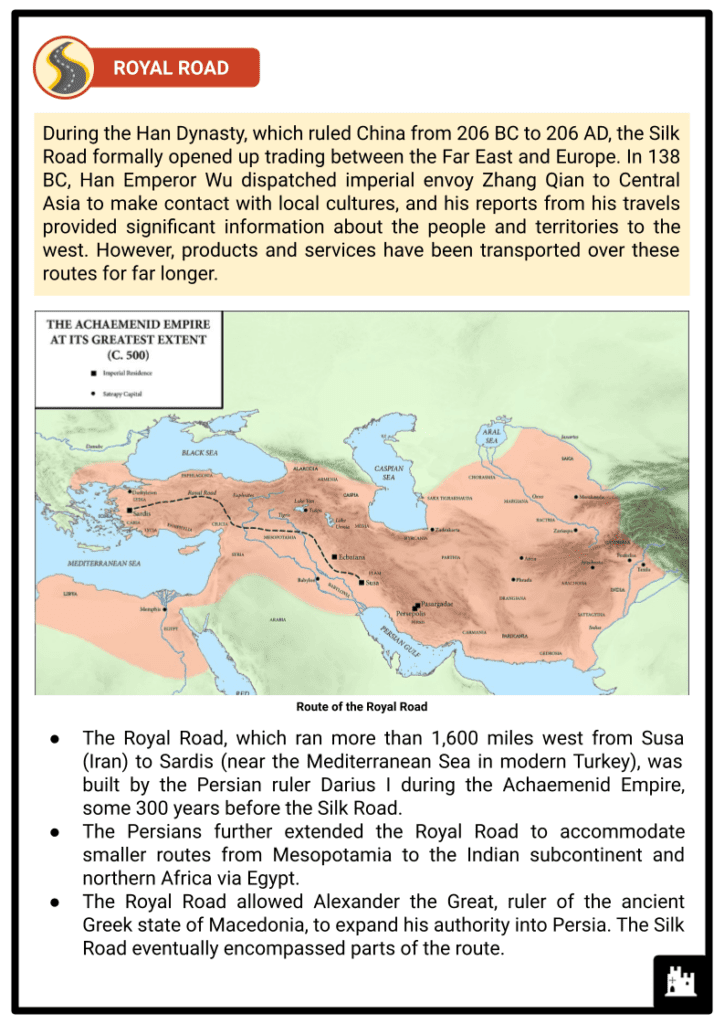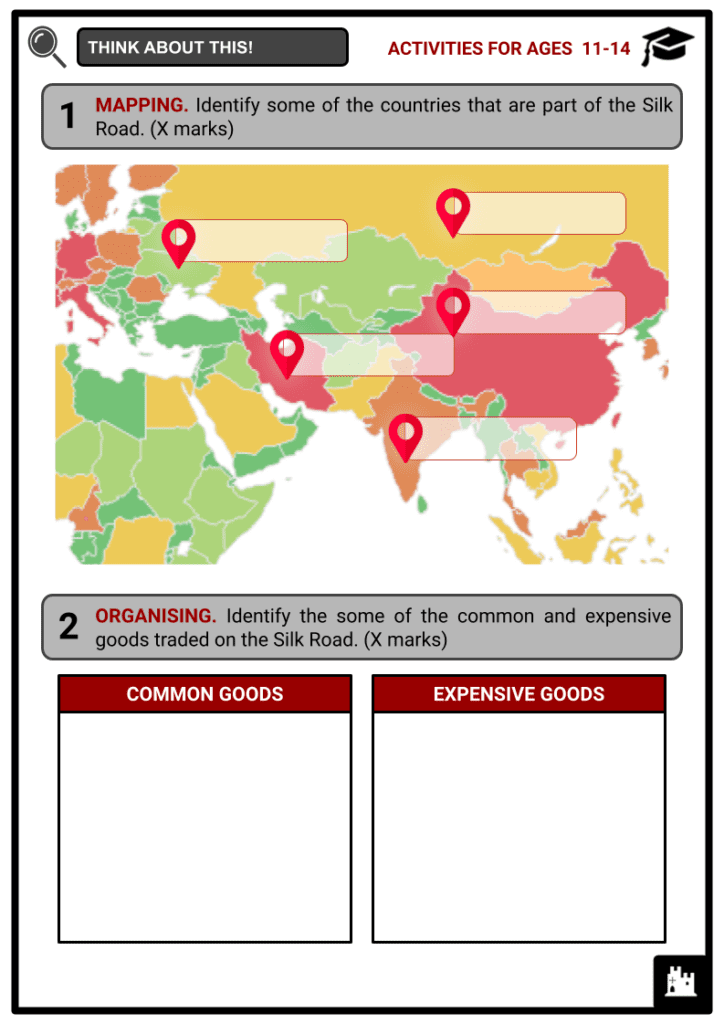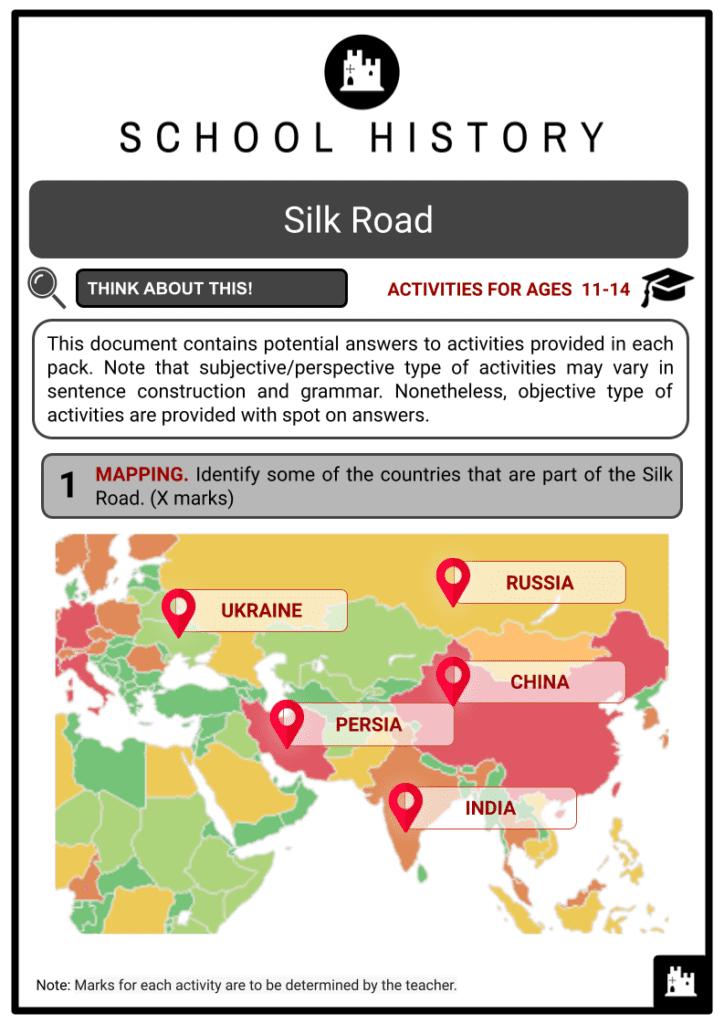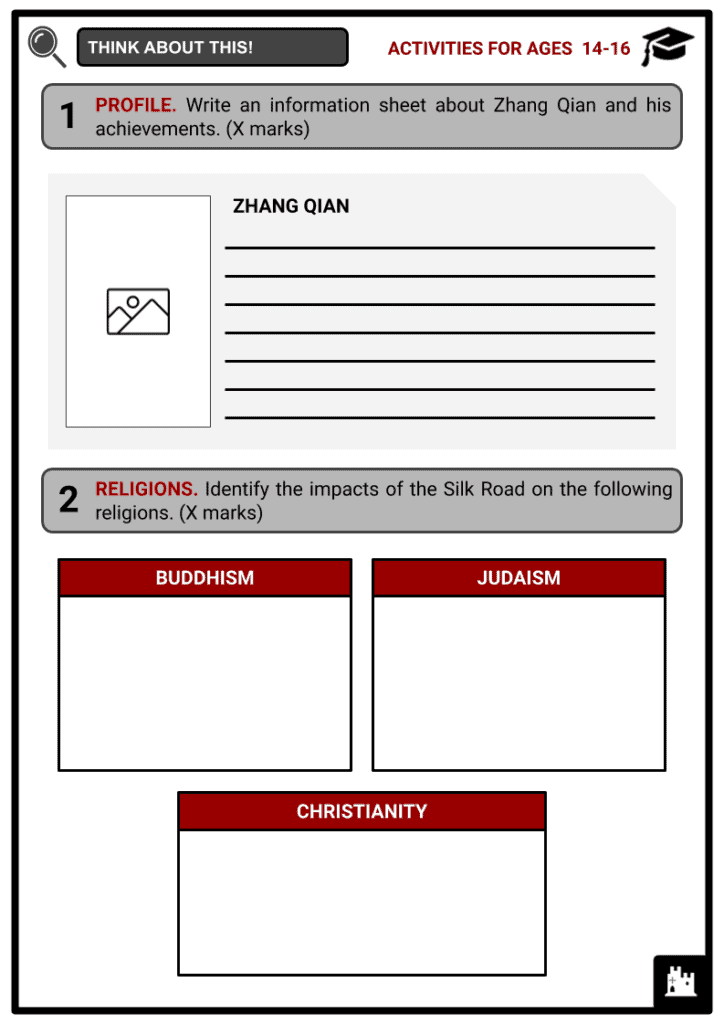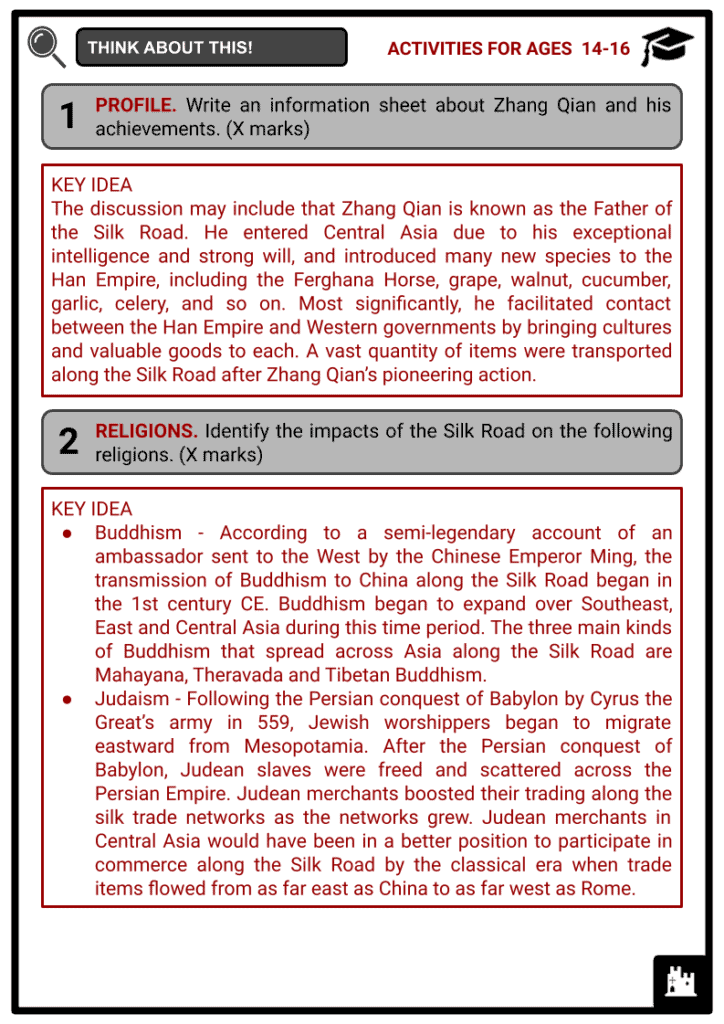Download Silk Road
Do you want to save dozens of hours in time? Get your evenings and weekends back? Be able to teach about the Silk Road to your students?
Our worksheet bundle includes a fact file and printable worksheets and student activities. Perfect for both the classroom and homeschooling!
Table of Contents
Add a header to begin generating the table of contents
Summary
- Royal Road
- History of the Silk Road
- Routes of the Silk Road
- Silk Road as an Economic Belt
- Silk Road Spices
Key Facts And Information
Let’s find out more about the Silk Road!
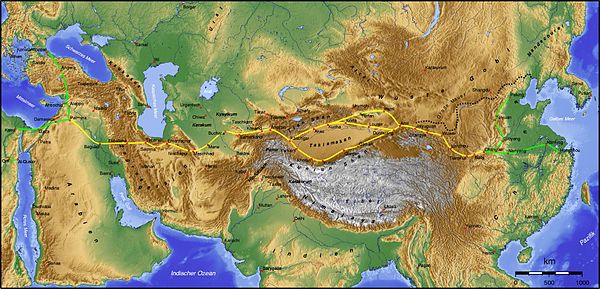
- The Silk Road was a network of trade routes that connected China and the Far East to the Middle East and Europe. The Silk Road routes were established when China’s Han Dynasty officially opened trade with the West in 130 BC, and routes remained in use until 1453 AD when the Ottoman Empire boycotted China and closed them. Despite the fact that the Silk Road hasn’t been used for international trade in almost 600 years, the routes have had a lasting impact on the commerce, culture and history to the present day.
Royal Road
- During the Han Dynasty, which ruled China from 206 BC to 206 AD, the Silk Road formally opened up trading between the Far East and Europe. In 138 BC, Han Emperor Wu dispatched imperial envoy Zhang Qian to Central Asia to make contact with local cultures, and his reports from his travels provided significant information about the people and territories to the west. However, products and services have been transported over these routes for far longer.
- The Royal Road, which ran more than 1,600 miles west from Susa (Iran) to Sardis (near the Mediterranean Sea in modern Turkey), was built by the Persian ruler Darius I during the Achaemenid Empire, some 300 years before the Silk Road.
- The Persians further extended the Royal Road to accommodate smaller routes from Mesopotamia to the Indian subcontinent and northern Africa via Egypt.
- The Royal Road allowed Alexander the Great, ruler of the ancient Greek state of Macedonia, to expand his authority into Persia. The Silk Road eventually encompassed parts of the route.
History
- During the first and second centuries BC, east-west trade routes between Greece and China began to develop. The Roman Empire and the Kushan Empire (which reigned over land in what is now northern India) both benefited from the Silk Road’s commerce.
- Remarkably, the ancient Greek term for China was ‘Seres’, which literally means ‘land of the silk’.
- Despite this clear connection, the phrase ‘Silk Road’ was not coined until 1877 when German geographer and historian Ferdinand von Richthofen used it to describe the trading routes for the first time.
- Historians now use the phrase ‘Silk Routes’, which better represents the reality that there were several routes.
Routes
- The Silk Road routes contained a vast network of strategically placed trading posts, markets and thoroughfares that facilitated merchandise transportation, exchange, distribution and storage.
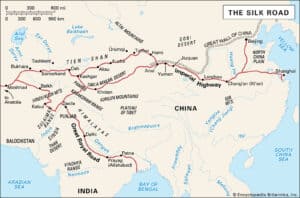
- The Greco-Roman metropolis of Antioch was connected to Ctesiphon (the Parthian capital) and Seleucia on the Tigris River, a Mesopotamian city in modern-day Iraq, through routes passed through the Syrian Desert via Palmyra.
- Routes passed eastward from Seleucia through the Zagros Mountains to the cities of Ecbatana (Iran) and Merv (Turkmenistan), from where they extended eastward to modern-day Afghanistan and Mongolia.
- Silk Road routes also connected to Persian Gulf ports, from which products were transported up the Tigris and Euphrates rivers. Routes from these cities also led to Mediterranean Sea ports, from which products were exported to cities across the Roman Empire and into Europe.
- The Silk Road routes also offered a means for explorers who wanted to learn more about the Far Eastern culture and geography.
- The Silk Road was notably used by Venetian explorer Marco Polo to travel from Italy to China, which was then ruled by the Mongolian Empire, where he arrived in 1275.
- He travelled by camel rather than boat, via overland routes. He arrived at Xanadu, the Mongolian emperor Kublai Khan’s magnificent summer home. In total, the explorer spent 24 years in Asia, possibly as a tax collector in Kublai Khan’s court.
- In 1295, Marco Polo returned to Venice through the Silk Road routes, just as the Mongolian Empire was falling apart. His travels along the Silk Road inspired him to write The Travels of Marco Polo, a book that provided Europeans a better understanding of Asian commerce and culture.
Economic Belt
- Despite the fact that the name ‘Silk Road’ derives from the popularity of Chinese silk among traders in the Roman Empire and throughout Europe, the material was not the only important item traded from East to West.
